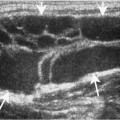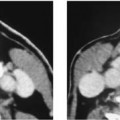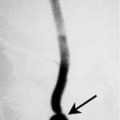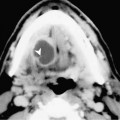Chapter 103 Congenital tracheal stenosis (CTS) is a rare congenital tracheal anomaly that often presents within the first few months of life. Males and females are equally affected. CTS is often associated with other systemic anomalies, including tracheoesophageal fistula, pulmonary hypoplasia, and anomalous vasculature of the great vessels, including vascular slings. CTS has been classified into three main categories: (1) generalized hypoplasia, (2) funnel-shaped narrowing, and (3) segmental stenosis. In the generalized hypoplastic form, the trachea is diffusely narrowed to just above the carina with the main bronchi being of normal diameter. The diameter of the narrowed tracheal lumen in the newborn is 1 to 3 mm. In the funnel-shaped form, the trachea progressively narrows from a normal proximal diameter to a tight stenosis just above the carina (Fig. 103–1). The main bronchi may be of normal caliber. With segmental stenosis, the narrowed segment may occur anywhere along the trachea. The presenting symptoms of CTS are multiple and include cough, persistent wheezing, stridor, and intermittent cyanosis. Advanced forms of CTS present at birth. Some patients with mild forms of tracheal stenosis may be asymptomatic. Symptoms are thought to result when the oxygen demand exceeds the amount that can be delivered through a compromised airway. Symptoms may be exacerbated by agitation. Definitive diagnosis is made at endoscopy. In most cases, the diameter of the affected segment is < than 3 mm. The walls of the trachea are typically rigid and non-distensible.
Congenital Tracheal Stenosis
Epidemiology
Clinical Findings
Pathology
Stay updated, free articles. Join our Telegram channel

Full access? Get Clinical Tree








